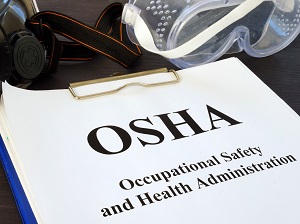Starting a new business can be overwhelming and expanding as your business grows can be challenging. OSHA can help by explaining the federal regulatory requirements concerning safety and health and help business owners create a safe and healthful workplace for employees that conforms to federal law.

There are a few key things all business owners must do to comply with Federal OSHA standards. States with OSHA-approved state plans have adopted standards equivalent to OSHA’s. To find out if your state has a state OSHA plan visit www.osha.gov.
Starting with the General Duty Clause, employees have a right to a safe workplace. Employers must also keep injury records, provide health and safety information to employees, let workers know about the dangers of hazardous chemicals, and be subject to an inspection if OSHA shows up.
Review these requirements below and find out how employers can access high-quality resources directly from OSHA to ensure success for their safety and health program.
OSHA General Duty Clause (OSH Act of 1970) Each employer shall furnish to each of his employees employment and a place of employment which are free from recognized hazards that are causing or are likely to cause death or serious physical harm to his employee and shall comply with occupational safety and health standards promulgated under this Act.
Employers must provide a safe workplace. Under the provisions of the Occupational Safety and Health Act of 1970 (OSH Act), also known as OSHA’s General Duty Clause, employees have a right to a workplace free from recognized hazards that are causing, or are likely to cause, death or serious physical harm regardless of the size of the business. Employers must comply with OSHA standards and regulations under the OSH Act. Employers must also be familiar with those OSHA standards and regulations that apply to their workplace and make copies of them available to employees upon request.

Employers are required to maintain records of injuries and illnesses. Most businesses with 11 or more employees at any time during the calendar year must maintain records of occupational injuries and illnesses as they occur using OSHA Form 300, Log of Work-Related Injuries and Illnesses. Such recordkeeping is not required for employers in most retail trade, finance, insurance, real estate, and service industries.
Employers must display OSHA safety and health information in the workplace. OSHA’s Safe and Healthful Workplaces poster (OSHA 3165 or the state equivalent) must be posted in a conspicuous location in the workplace where workers and prospective employees can see it. This publication informs employees of their rights and responsibilities under the OSH Act. This poster is free and available to download or order in several different languages on OSHA’s website.

Employers are required to communicate information about hazardous chemicals in the workplace. Employers must inform workers about the dangers of chemical hazards in their workplaces and train employees regarding proper safeguards. This includes providing information on the hazards and identities of chemicals that employees may be exposed to on the job and describing protective measures to prevent adverse effects. Chemical producers and importers must evaluate their products for chemical hazards and provide hazard information to customers.
Businesses may be subject to inspection by OSHA. All businesses covered by the OSH Act must comply with federal workplace safety and health standards, or comparable state standards. Every establishment covered by the OSH Act is subject to inspection by federal or state compliance safety and health officers who are chosen for their knowledge and experience in the occupational safety and health field. OSHA conducts workplace inspections of businesses in federal jurisdictions, and OSHA-approved state plans are responsible for conducting workplace inspections of businesses under state jurisdiction to enforce their own standards that are “at least as effective” as federal requirements.

Employers can reach out to OSHA for additional assistance. OSHA’s Area Office Staff provide advice, education, and assistance to employers (particularly small businesses), trade associations, local labor affiliates, and other stakeholders who request help with occupational safety and health issues. They work with professional organizations, unions, and community groups concerning issues of safety and health in the workplace.
OSHA also offers the following services:
Consultation - Employers who want on-site assistance in identifying and correcting hazards and in improving safety and health programs can get help from a free and confidential consultation service largely funded by OSHA and delivered by state consultation staffs.
Instruction - Training courses in safety and health subjects are available through OSHA Training Institute Education Centers. Visit OSHA’s page on OTI Education Centers online to find program information, a list of training courses available, and a map of center locations.
Publications - Various publications are available on OSHA’s website to help businesses comply with OSHA requirements. Publications range from booklets and fact sheets to posters and hazard alerts. Easily search by type or topic on the OSHA Publications web page.
Partnership - The OSHA Strategic Partnership Program (OSPP) provides opportunities for OSHA to partner with employers, workers, professional or trade associations, labor organizations, and other interested stakeholders to encourage, assist, and recognize their efforts to eliminate serious hazards and achieve a high level of worker safety and health. For more information on the OSPP program, visit OSHA’s Partnership web page.

Every business is different and may be following their own unique journey as they implement their health and safety program. For more information on complying with OSHA standards, the following resources may be helpful.
OSHA Small Business Safety and Health Resources provides direct links to information employers need including compliance guides and reporting guidelines.
OSHA Office of Small Business Assistance administers OSHA's nationwide On-Site Consultation Program and serves as liaison and a point of contact within the agency for small businesses.
OSHA Small Business Safety and Health Handbook is an invaluable guide for all new employers.

.jpg)

.jpeg)